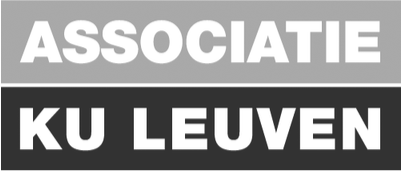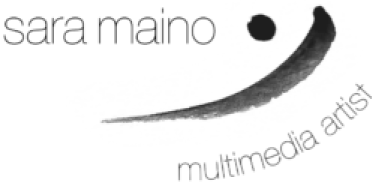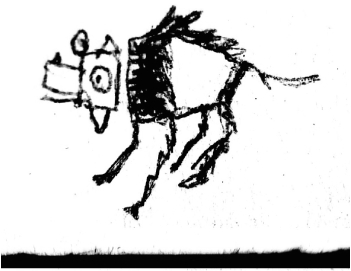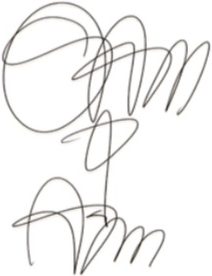If you look through the paintings of a Belgian-based artist Sabine Frömmer, you’ll quickly realize that her work can be described as poetic. There’s absolutely no doubt that her landscapes, full of metaphysical themes, are visual poetry; they’re emotionally resounding, and provoke viewers to decode the poetic messages hidden in her visual motifs, like her use of water and trees, for example. However, is there really something to decode, or does this artist avoid symbolism all together?
The painter, who currently resides in Herent, Belgium, began to pursue landscape painting in 2005 and hasn’t looked back since. After spending 20 adventurous years in the Netherlands studying history at the University of Amsterdam and then working as a teacher for a long time, the shift in careers was drastic — yet, Sabine hit the ground running and has managed to graduate from an art school in Leuven and start a full-time career in the industry.
Childhood in the Black Forest
Sabine was seventeen years old when she was deprived of her home and homeland. Family instability often gives impetus to artistic experimentation, and young Sabine began at an early age to search for her poetic voice. ‘I was born and raised in Berlin, but for a few years, between 9 – 12, I lived in a small village (Endingen am Kaiserstuhl) near the black forest in the south of Germany in a children’s home, with only 10 children. Surprisingly, this was the happiest period of my live. From the window of my bedroom I could see a big garden with two tall trees and the wine hills in the distance. We, children, played every day outside in the forests and hills of the surrounding area. Very soon, after I arrived there, I had piano lessons – they could not separate me from the old black piano they had there. As all kids, we were creative. Our children’s drawings hung on the walls of the house.’
‘My memories of that period are memories of love and long summer days of playing under the sky. I still visit the people of that children’s home. They were always closer to me than my own parents. In that time, I guess I developed a deep connection with nature. It is a connection with my heart and soul and I see this period as my ‘real birthplace.” ‘Another important influence of that period is the creative activities of Moni, who was one of the educators of that home. She played cello very well. Now she makes icons, but in those days she painted big colorful flowers that I admired. At present, she is one of the biggest fans of my art works.’
Connecting with nature
Frömmer’s fascination with landscapes reminds the spectators of Baudelaire’s definition of the nature and purpose of art: that the essence of reality is not material but spiritual; that man is made aware of the soul of everything through a feeling for the aesthetic. She uses two elements, water and trees, and sometimes even at the same time. When asked about her use of naturescapes, she replied: ‘I never had the connection with portraits painting. You need a fascination with faces in order to paint them. I don’t have it and I have no idea why. When I was in my twenties I made only abstract paintings with aquarelle colors. I needed the ultimate self-expression and refused any form of teachings. I was also deeply in love with the roaring twenties in Berlin. Expressionism and Dada were my big models (painters and writers) for self-expression. ‘
‘Later, my paintings gradually changed from abstract to landscapes, but at the same time,my life changed and the daily routine requested more and more of my attention. My period of self-expression dried up and closed. Years later, I moved to Belgium, and in 2005 I went to SLAC Academy in Leuven – a friend of mine advised me to take chances there. And so I did. There, I learned the techniques of oil painting and I enjoyed it. During those 7 years, I learned how to use this materials in order to express my more mature connections with nature I already felt as a child. Between 2009 and 2012, I made many paintings of the black forest next to my seascape paintings. For some time I was fascinated by waterfalls. I had two teachers: Luc Oeyen (the first three years; he teaches basics) and Hilde Overbergh (the following 4 years; who let me find my own ways).’
‘Recently, I have been painting mostly seascapes, but now I wish to combine them with forests, especially trees. I still use oil paint on canvas. I like to travel and take pictures and then choose suitable photos to use them as a guidance to make a painting. These photographs are a starting point — memory triggers, but my paintings are never a copy!’
Throughout her artistic career, Sabine drew inspiration from her most loved and treasured artist, Caspar David Friedrich, who was a great painter of the German Romantic period. ‘The way he handled colors is amazing. His allegorical landscapes featuring figures silhouetted against night skies, morning mists, barren trees or Gothic ruins are unrepeatable.’
Landscapes as Paintings of the Spiritual Life
Sabine examines stored memories and constructs linkages between physical scapes and the spiritual realities, which lie beyond appearance. Taking the forms of the real world as the starting point in her works, she tests the possibilities of her own imagination and perception of the peace and ambiguity of nature. This artist travels often, and the landscapes in her paintings reflect the brightest pages of her memories. ‘I made a lot of paintings of the black forest of my childhood times. For my seascapes, I used photographs from my trips to Zeeland (the Netherlands) and Normandy (Villers-sur-Mer). I want to share with people how I felt when spending time one on one with nature and what it was like being there in that moment. The meaning behind my paintings is “bringing silence,” because silence can hardly be found and currently the world needs it badly.’
‘When you look at the paintings you feel the air of the seacoast, the smell of the Normandian sun, the whisper of the black forests – only beauty of nature in four seasons, the origin of our being and strength of life. Art gives me peace, and I hope that my audience is able to feel that peace and silence I wish to express,’ confesses Sabine.
This type of art offers an alternative way of interacting with nature. In modern times, this connection is vital to our future. Both art and nature are purely inspirational and can change the world. Put together, they might possibly provide us with the key to bright thoughts and peace of heart.
Meet Sabine Frömmer at one of her upcoming exhibition and follow her work on her website.
By Marina Kazakova
Marina Kazakova is a transmedia researcher, poetry visualizer, and a writer. She graduated from the department of Transmedia of Sint-Lukas University Brussels with an art-based research thesis on ‘How to Visualize Poetry.’ Currently, she runs her own artistic production «Seanema»

















